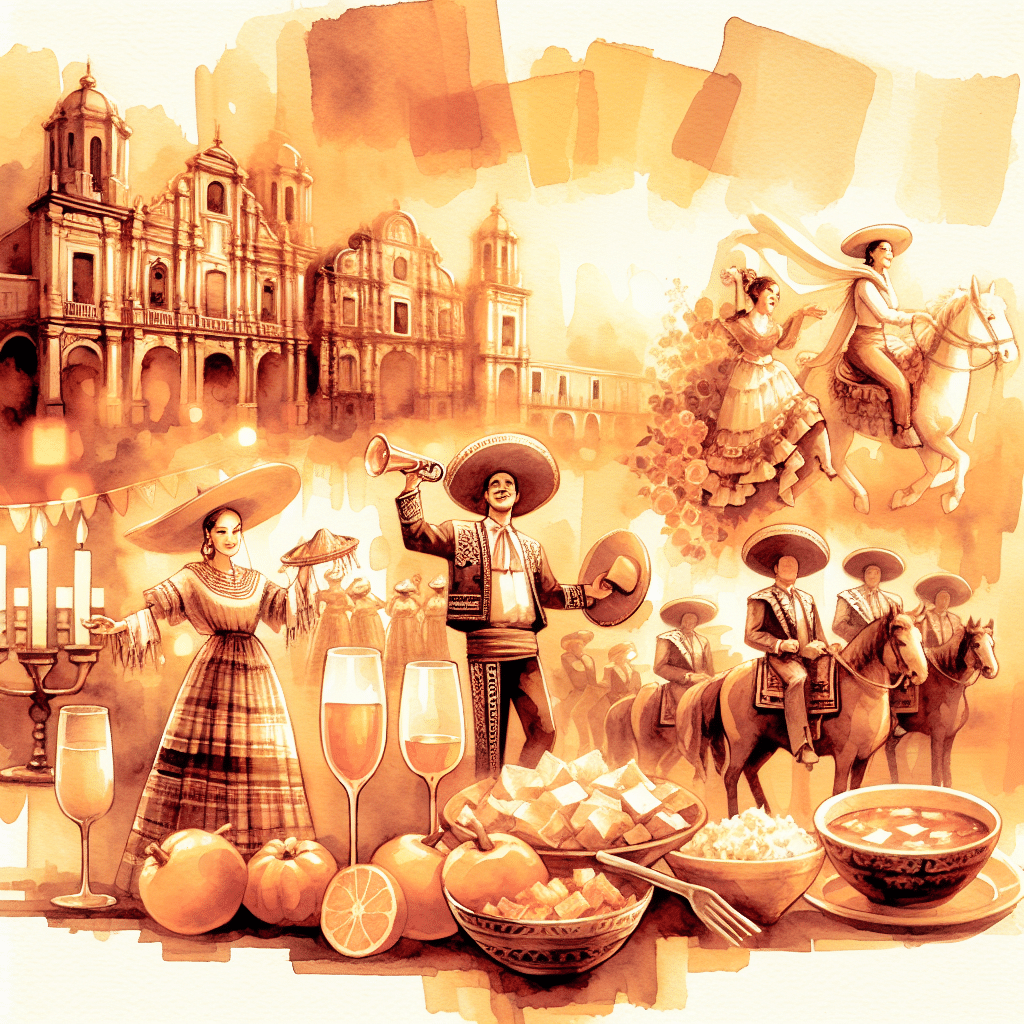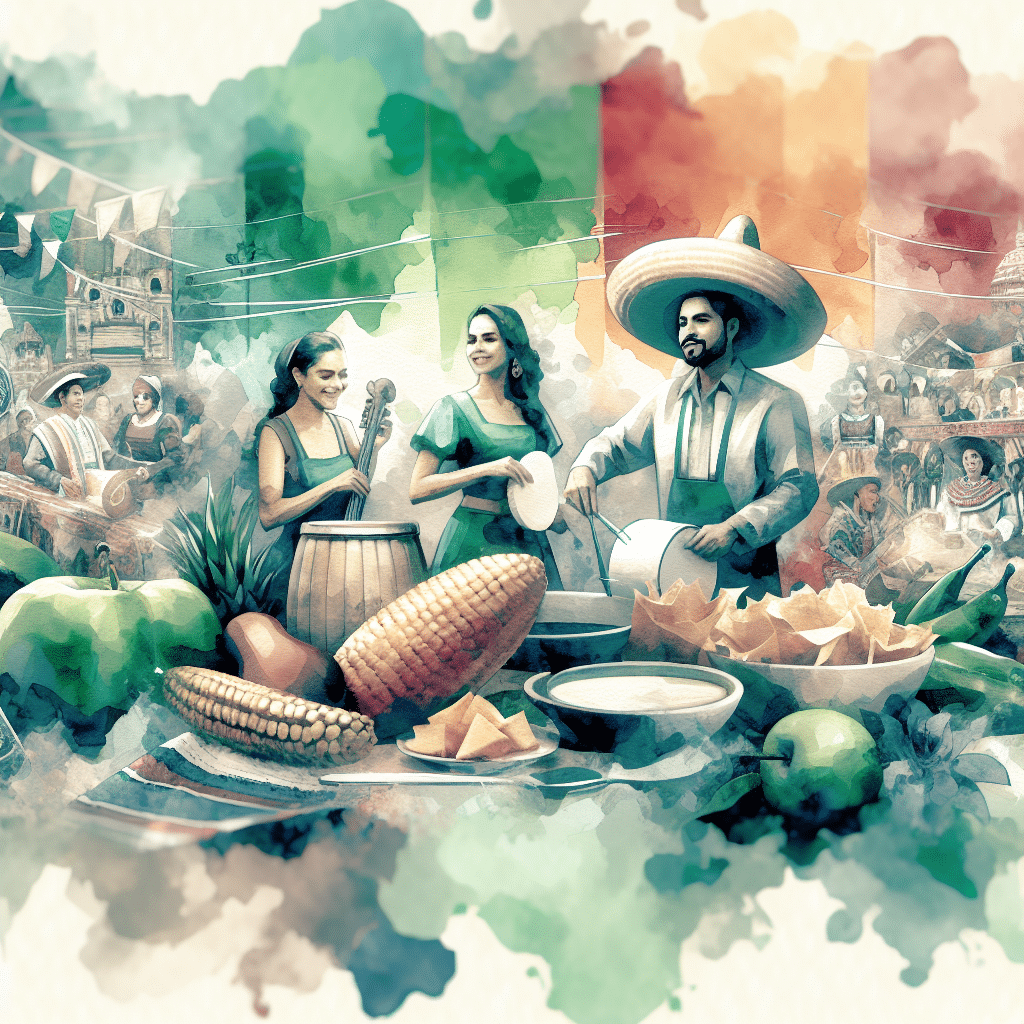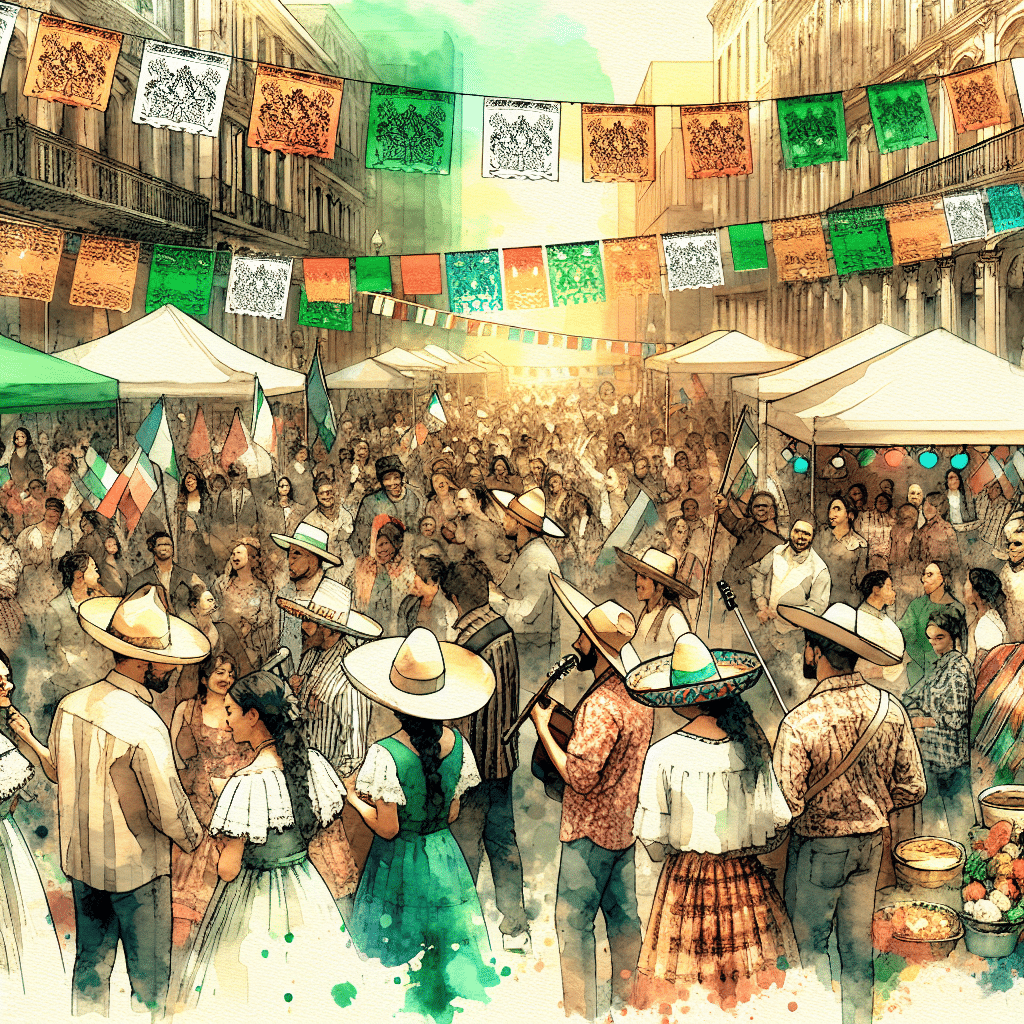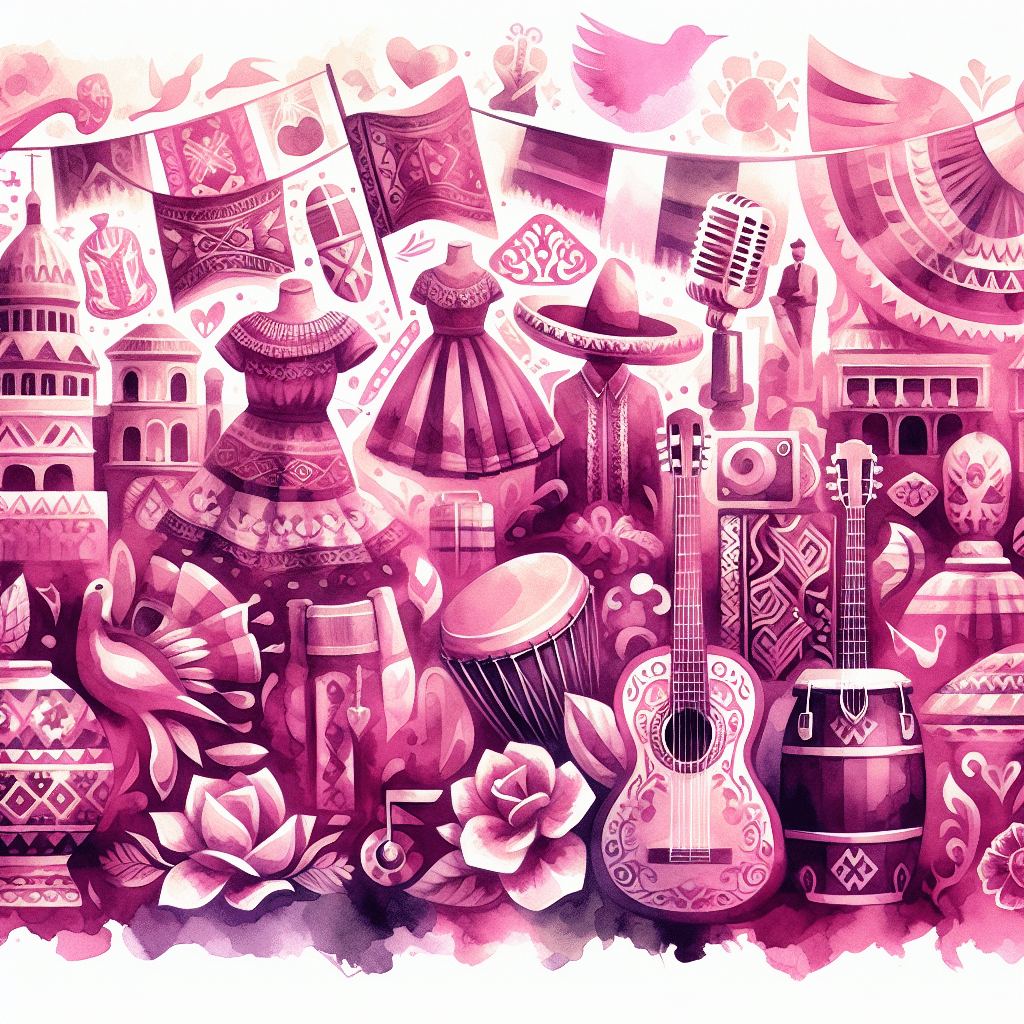
Latino Heritage and Traditions: Celebrating Hispanic Heritage Month
Latino Heritage and Traditions
Celebrating Hispanic Heritage Month
Hispanic Heritage Month is like the Super Bowl of Latino traditions and customs. Every year from September 15 to October 15, the United States bursts into a vibrant celebration of Latino culture, history, and contributions. This month-long fiesta commemorates the independence anniversaries of several Latin American countries, including Costa Rica, El Salvador, Guatemala, Honduras, Nicaragua, Mexico, and Chile.
During Hispanic Heritage Month, you might find folks salsa dancing in the streets or cooking up a storm with traditional dishes. It’s a time to honor trailblazers like the Queen of Salsa, Celia Cruz, who helped popularize salsa music in the United States. You can also catch performances from Ballet Hispánico, founded by the legendary Tina Ramirez, which celebrates Latino communities through dance (Smithsonian Latino Center).
For those looking to partake in the festivities, there are plenty of Hispanic Heritage Month activities to explore. From attending latino cultural events to participating in traditional latino dances, the options are endless.
Influence of Latino Culture
Latino culture is like the secret sauce that spices up the melting pot of the United States. Latinas and Latinos have spent centuries expressing and preserving their identities, shaped by factors such as geography, heritage, race, and gender. This rich tapestry of experiences has significantly contributed to the culture of the United States.
Consider the impact of Mesoamerican civilizations on modern-day Latino customs. Festivals like the Fiesta de la Candelaria combine indigenous and Catholic elements, featuring elaborate processions, music, and dance. Or take Carnaval, a vibrant festival celebrated worldwide, including in Hispanic communities.
Latino influence extends to various facets of American life, from music and dance to food and fashion. The rise of salsa music in New York during the 1960s and 1970s is a prime example of this cultural fusion, blending Cuban and other Afro-Latino musical traditions.
For those keen on exploring more, check out our articles on famous hispanic americans and hispanic culture and traditions. These resources provide deeper insights into the rich heritage and lasting impact of Latino culture.
| Celebration | Description |
|---|---|
| Hispanic Heritage Month | Month-long celebration of Latino culture, history, and contributions in the U.S. |
| Fiesta de la Candelaria | Combines indigenous and Catholic elements with processions, music, and dance. |
| Carnaval | Vibrant festival featuring parades, music, and elaborate costumes. |
Through these vibrant traditions and customs, the Latino community continues to shape and enrich the cultural landscape of the United States.
Latino Festivals and Celebrations
Latino traditions are bursting with lively festivals that highlight the beauty and depth of Hispanic culture. Let’s jump into two standout celebrations: Las Posadas and the Horseradish Festival in Oaxaca, Mexico.
Las Posadas Tradition
Las Posadas is a cherished tradition celebrated in Mexico, Guatemala, Honduras, and parts of the southwestern United States. For nine nights starting December 16, communities come together to reenact Mary and Joseph’s search for shelter before the birth of Jesus. This event is a fascinating mix of Roman Catholic observations and Aztec customs, specifically the winter solstice festival and the celebration of the Aztec mother goddess Tonantzin.
During Las Posadas, participants travel from house to house, singing traditional songs and seeking refuge, only to be turned away until they reach a designated home where they are finally welcomed. This journey is filled with joy, music, and community spirit. Each night ends with a festive celebration featuring food, piñatas, and prayers.
| Key Element | Description |
|---|---|
| Duration | 9 nights (December 16-24) |
| Regions Celebrated | Mexico, Guatemala, Honduras, Southwestern U.S. |
| Activities | Reenactments, singing, food, piñatas, prayers |
For more on similar events, check out latino community celebrations.
Horseradish Festival in Mexico
The Horseradish Festival, known as Noche de Rábanos, is a quirky and delightful celebration held on December 23 in Oaxaca, Mexico. This unique festival features oversized radishes intricately carved into nativity scenes, images of Oaxacan folklore, and even political caricatures (History). The tradition began at the end of the 19th century and has since grown into a beloved annual event.
Participants spend months preparing their radish masterpieces, which are then displayed in the town square. The festival includes music, dancing, and a lively atmosphere as people admire the creativity and skill of the radish artists. There are also competitions, with prizes awarded for the best radish carvings.
| Key Element | Description |
|---|---|
| Date | December 23 |
| Location | Oaxaca, Mexico |
| Activities | Radish carving, music, dancing, competitions |
For more information on cultural events like this, visit latino cultural events.
Both Las Posadas and the Horseradish Festival offer a glimpse into the rich tapestry of hispanic culture and traditions. These celebrations not only preserve cultural heritage but also bring communities together in joyful and meaningful ways. Whether you’re participating in the reenactments of Las Posadas or marveling at the radish artistry of Noche de Rábanos, these festivals are a testament to the vibrant spirit and creativity of Latino traditions and customs.
Family Values in Hispanic Culture
Close-Knit Family Structures
In Latino traditions, family ties are stronger than a double shot of espresso. Latino families are known for being close-knit, often including not just the nuclear family but also extended relatives (Spanish Academy). Moving to another region or country? Unthinkable! Latinos prefer to stay close to their roots, and it’s common for family members to live together or frequently visit each other.
| Family Structure | Description |
|---|---|
| Nuclear Family | Parents and children |
| Extended Family | Includes grandparents, aunts, uncles, cousins |
| Living Arrangements | Often multi-generational households |
| Family Gatherings | Regular, frequent, and often involve everyone |
The bond within Latino families is so strong that even the death or illness of a parent or grandparent often reignites the desire to preserve family and cultural roots. For more on how these close ties are celebrated, check out our article on latino community celebrations.
Role of Fathers and Mothers
In traditional Hispanic homes, the father is the head honcho, the breadwinner, and the ultimate authority figure. He makes significant decisions and disciplines the children as needed. Think of him as the CEO of the family corporation.
| Role | Description |
|---|---|
| Father | Sole financial provider, main authority, decision-maker |
| Mother | Submissive, sacrificial, handles household chores |
| Children | Taught responsibility from a young age |
Mothers, on the other hand, are the unsung heroes. They handle never-ending chores, often sacrificing their own needs for the family. Their role is pivotal in nurturing and maintaining the household. The children are taught early on about their future responsibilities and the importance of family values.
While these roles might sound like they came straight out of a telenovela, they hold a significant place in Latino traditions and customs. For those interested in how these roles play out in celebrations, read more about hispanic culture and traditions.
Family values in Hispanic culture differ from American values in several ways. For example, Latino families are less focused on instilling independence in children and more on maintaining strong family ties (Spanish Academy). Mealtime practices and punctuality also vary, with Latinos often enjoying long, communal meals and a more relaxed approach to time.
Understanding these dynamics provides a richer appreciation for Hispanic Heritage Month and the various latino cultural events that celebrate these enduring values.
Religious Influence in Hispanic Culture
Religion is a big deal in Latino traditions, adding a layer of spiritual meaning to their celebrations. Let’s dive into how Catholicism is woven into Hispanic culture and how it shapes various holidays.
Catholicism in Latino Communities
Catholicism is the main religion in Hispanic communities, with over 90% identifying as Catholic (Spanish Academy). This influence is seen in their daily lives and many cultural practices.
Midnight Mass, or La Misa de Gallo, is a major event on Christmas Eve. This tradition goes back to the fifth century when Pope Sixtus III introduced it at Rome’s Santa Maria Maggiore basilica (History). Families gather, attend church, and celebrate the nativity scene.
Another big celebration is Three Kings Day on January 6. This holiday marks the visit of the three wise men to baby Jesus, and kids receive gifts, symbolizing the gifts given to Jesus.
Impact of Religion on Holidays
Many holidays in the Hispanic world are deeply rooted in religious traditions, blending Catholic and indigenous cultural elements.
Fiesta de la Candelaria is celebrated on February 2nd, mainly in Mexico and parts of Peru. This festival includes dressing statues of the Virgin Mary and the Child Jesus in fancy outfits, lively processions, music, and dance (English to Spanish Raleigh).
Día de los Muertos (Day of the Dead), celebrated on November 1st and 2nd, is a unique mix of Mesoamerican traditions and Catholicism. Families honor deceased loved ones with ofrendas (offerings), calacas (skeletons), calaveras (skulls), cemetery visits, parades, music, and traditional foods like Pan de Muerto and sugar skulls.
Table of Key Religious Holidays and Traditions
| Holiday | Date | Key Traditions |
|---|---|---|
| La Misa de Gallo | December 24 | Midnight Mass, family gatherings, nativity scenes |
| Three Kings Day | January 6 | Gift-giving, parades, reenactments of the wise men’s visit |
| Fiesta de la Candelaria | February 2 | Dressing religious statues, processions, music, dance |
| Día de los Muertos | November 1-2 | Ofrendas, calacas, calaveras, cemetery visits, parades, traditional foods |
These celebrations are more than just holidays; they help Hispanic communities preserve their cultural roots and pass down traditions to future generations. For more on how Latino traditions shape their cultural identity, check out our sections on Hispanic Heritage Month and Latino Heritage Month. And don’t miss the traditional Latino dances that often go hand-in-hand with these festive occasions!
Keeping Latino Traditions Alive
Latino traditions are a colorful mix of history, culture, and family values. Keeping these traditions alive helps maintain a connection to one’s roots and ensures that the heritage is passed down to future generations.
Staying Connected to Cultural Roots
Many Latinos in the U.S. feel a strong pull to keep their cultural roots alive, especially after losing a parent or grandparent. This often leads them to reconnect with family traditions, recipes, and rituals passed down through generations.
Take Sandra Maria Garcia from Fort Worth, Texas. She’s become her family’s historian, collecting documents, photos, and records to trace her family’s journey from Spain to Durango, Mexico, to Texas. After losing several family members, she started documenting family traditions and recipes like her mom’s mole and enchiladas. If you want to dive deeper into maintaining cultural roots, check out our article on Hispanic culture and traditions.
Then there’s Sophia Nieves from San Diego, who blends her son’s multicultural traditions with her own Puerto Rican customs. She makes both Puerto Rican and Indian-style arroz to ensure her son stays connected to their heritage. This shows how keeping cultural roots is an ongoing and evolving process.
Passing Down Family Heirlooms
Family heirlooms are more than just objects; they are tangible reminders of heritage and tradition. Many Latinos, like Carmen Milagro, honor their roots through these cherished items. Milagro, a musician and entrepreneur of Salvadoran descent, started Divina Skincare & Botanicals, a line based on traditional remedies, to honor her mother and maintain connections to her Salvadoran heritage.
Passing down family heirlooms often involves more than just objects; it includes stories, recipes, and customs shared during Latino community celebrations. These heirlooms serve as a bridge between generations, ensuring that the rich heritage is not lost.
| Heirloom Type | Cultural Significance | Example |
|---|---|---|
| Recipes | Culinary Traditions | Mole, Enchiladas, Arroz |
| Documents | Historical Record | Family Trees, Immigration Papers |
| Artifacts | Tangible Heritage | Traditional Clothing, Jewelry |
Through these practices, Latinos keep their traditions and customs alive, preserving their cultural identity. For more on how Latino traditions are celebrated, visit our section on Hispanic Heritage Month activities.
Fusion of Indigenous and European Traditions
Latino traditions are a lively mix of indigenous and European influences. Let’s look at two standout examples: Carnaval celebrations and the impact of Mesoamerican civilizations.
Carnaval Celebrations
Carnaval is the ultimate bash, where everyone gets to let loose and show off their best moves. Celebrated worldwide, Hispanic communities have their own unique spin on this festival. From the Samba parades in Rio de Janeiro, Brazil, to the masked extravaganza in Venice, Italy, Carnaval is all about dazzling costumes, catchy music, and non-stop dancing.
In Latin America, Carnaval blends indigenous rituals with European traditions. Take the Carnaval of Gualeguaychú in Argentina, for instance. It’s a riot of color, music, and intricate costumes. The Veracruz Carnaval in Mexico and the Carnaval of Oruro in Bolivia are equally spectacular, showcasing traditional dances and folklore.
| Carnaval Location | Key Features |
|---|---|
| Rio de Janeiro, Brazil | Samba parades, elaborate floats |
| Venice, Italy | Masks, elegant costumes |
| Trinidad & Tobago | Calypso music, vibrant costumes |
| Gualeguaychú, Argentina | Traditional dances, folklore |
| Veracruz, Mexico | Street parades, regional music |
| Oruro, Bolivia | Indigenous rituals, European influences |
For more ways to celebrate Latino heritage, check out our guide to Hispanic Heritage Month activities.
Influence of Mesoamerican Civilizations
Mesoamerican civilizations, especially the Aztecs and Mayans, have left a lasting mark on Latin culture. The Aztecs, for example, introduced culinary staples like salsa, tortillas, and tamales. These dishes are still beloved in Mexican cuisine today.
Beyond food, the Aztecs contributed traditional dances and religious practices that are still part of modern festivals and ceremonies. The Mexican Day of the Dead, with its colorful altars and sugar skulls, is rooted in ancient Aztec rituals. The Quechua language and the Mayan calendar also continue to influence spirituality and rituals in Latin American countries.
Spanish culture, influenced by the Romans, introduced Latin as the common language, which evolved into modern Spanish. Roman architecture, such as the Gothic Quarter in Barcelona and the aqueduct of Segovia, are significant reminders of Roman contributions to Spain.
For a deeper dive into the fusion of traditions, don’t miss our article on Latino cultural events.
By recognizing the blend of indigenous and European traditions, we can appreciate the rich tapestry that makes up Latino culture. Whether through vibrant Carnaval celebrations or the enduring influence of Mesoamerican civilizations, these customs continue to shape and enrich the lives of many. For more on Hispanic culture and traditions, explore our detailed guides and articles.




